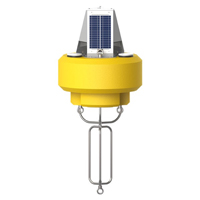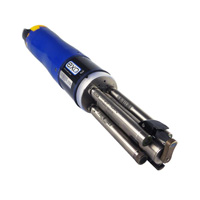 Monitoring the water quality of calm water bodies like lakes is a lot different than tracking that of a moving river. Things can be especially tough when heavy rains roll through and push flows and levels to new heights. But there is one thing that can complicate monitoring a river still more: the presence of a dam.
Monitoring the water quality of calm water bodies like lakes is a lot different than tracking that of a moving river. Things can be especially tough when heavy rains roll through and push flows and levels to new heights. But there is one thing that can complicate monitoring a river still more: the presence of a dam.
This is because the dam holds waters back that are only released when managers need them to be. When these dam discharge releases occur, especially after periods of heavy rain and flooding, pent up pressure behind the dam surges through the river on the other side.
Officials at the Oklahoma Water Resources Board know about these issues firsthand. As part of their work overseeing water supplies in the state, they carry out monitoring of water conditions below the Kerr Dam discharge, which sits on Hudson Lake.
Tracking dissolved oxygen levels below this dam discharge is of high importance because of the effects they can have on aquatic life if they get too low. Workers at the dam are also concerned with the levels because maintaining them at certain thresholds is needed to retain licensing for operation from the Federal Energy Regulatory Commission.
On the lake side of Kerr Dam, the Resources Board maintains a profiler that goes up and down in the water column to monitor dissolved oxygen and other water parameters like temperature and conductivity. This is complemented by two data buoy platforms deployed downstream of the dam in the Grand River.
Data buoys downstream

Each is a NexSens Technology MB-300 (CB-450) Data Buoy equipped with solar panels for power and a solar marine light that alerts boaters and others of their locations in the waterway. Both are anchored in the river using welded I-beams because other anchoring options simply can’t stand up to some of the heaviest flows. Inside each is a watertight NexSens SDL500C Submersible Data Logger featuring cellular telemetry to broadcast data to managers at the dam.
YSI 6600 Multi-Parameter Water Quality Sondes are deployed on the bottomside of each buoy platform, and sit securely in stainless steel pipes that also help to balance each buoy. These sondes are equipped with sensors for measuring the Grand River’s temperature, conductivity and dissolved oxygen levels.
Water quality information from the sondes are sent to the NexSens SDL500C data loggers that transmit them every 15 minutes to a computer system housed at the dam. If reported levels surpass or don’t meet certain thresholds, managers are sent automated alerts so they can adjust dam discharge operations as needed.
Photos courtesy of the Grand River Dam Authority
The NexSens CB-450 Data Buoy is designed for deployment in lakes, rivers, coastal waters, harbors, estuaries and other freshwater or marine environments.
The X2-SDL Submersible Data Logger is a rugged, self-powered data logging system with optional cellular, satellite, or radio communications.
EXO3 is a purpose-built sonde for monitoring major water quality parameters, including: pH, conductivity, temperature, turbidity and dissolved oxygen.



